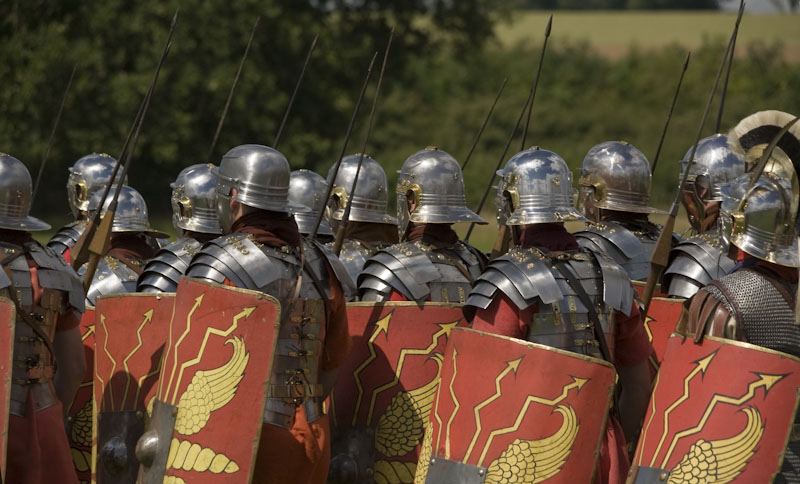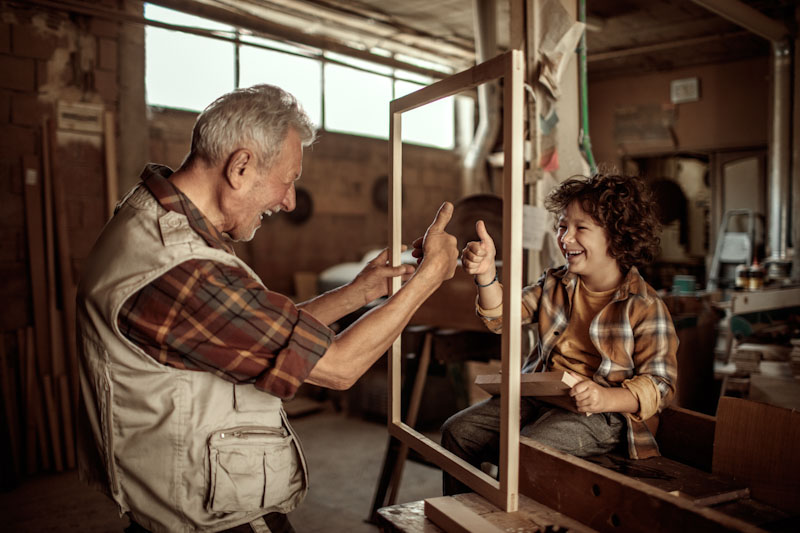Being a survivalist isn’t just about stockpiling supplies. The largest food store in the world is useless if you don’t have the physical abilities to defend it. Balance, flexibility and hand-eye coordination are crucial survival skills you can’t afford to ignore.
Here are 20 different reaction drills to improve your motor skills and chances of survival.
Dynamic Stretching
The simplest way to develop your motor skills is through dynamic stretching. Athletes from all sports use this technique to warm up their fast-twitch movements and coordination before practices or games. Static stretching only requires you to stay in one spot, while dynamic stretching demands full-body training.
1. High Knees
Run in a straight line and raise your knees as high as possible with each step. You should feel a stretch in your glutes, hamstrings and lower back.
2. Butt Kicks
Run in a straight line and kick your legs back so they hit your glutes. This movement stretches the quads and helps with knee flexibility. It’s a simple stretch that’s highly effective at improving your foot speed.
3. Side Shuffle
This stretch is the speedier version of the side lunge that requires you to do a lateral shuffle as fast as possible. You’ll feel the burn in your hips. Lateral movements are common in military exercises, and every survivalist should feel comfortable in this side position.
These particular stretches mimic two key movements you might perform in a survival situation. They replicate running through rough terrain and moving laterally to dodge attacks. Your reaction times will significantly improve once these fundamental movements become second nature.
Gym Exercises
The gym is traditionally a place to hone your brute strength, but some movements can also improve your motor skills. These workout styles are more technique-based, forcing you to focus on your entire body rather than one muscle group. Full-body activities are often the most effective at developing your coordination.
4. HIIT
High-intensity interval training involves short bursts of grueling exercise. They can be anything you want. The goal is to burn out your muscles and increase your heart rate. Every movement requires full concentration once you’re in this vulnerable physical state. Improving your motor skills during exhaustion translates to better abilities at full strength.
5. Calisthenics
Along with HIIT, calisthenics is the most fitting workout style for survivalists. It strictly involves bodyweight exercises like pushups, pullups and burpees. Bodyweight movements help you develop a stronger mind-muscle connection.
6. Powerlifting
Powerlifting builds your strength and coordination. Exercises like the power clean, snatch and clean-and-jerk require you to quickly react to massive shifts in weight. You must control your entire body under the bar and make tiny adjustments to stay balanced. This workout style is a great choice for survivalists.
Sports
Playing one year-round sport limits your athletic potential. For example, to become a well-rounded soccer player, you should explore other activities to develop a balanced skill set and a better feel for the game. Here are some complementary sports that will help you become a better all-around athlete.
7. Martial Arts
No other sport tests your coordination like martial arts. Your success depends on how quickly you can respond to punches, kicks and attempted takedowns. People with slow reaction times don’t last long. If you want to develop elite motor skills and reaction times, martial arts is the way to go.
8. Baseball
Hitting a baseball is one of the hardest things in sports. It’s almost impossible to make contact with a ball traveling upwards of 90 mph. Sometimes batted balls are even faster, reaching more than 110 mph. Baseball has a microscopic margin for error and tests the reaction time of every position on the field.
9. Tennis
Baseball can be fast, but tennis is faster. The swiftest recorded tennis serve was 163.7 mph, while the average player can still reach 100 mph. The sport also involves lots of fast-twitch movements and changes in direction. Everything you do in tennis requires a lightning-quick reaction.
10. Pickleball
Pickleball is a condensed version of tennis with some elements of badminton and pingpong mixed in. The court is just 20 feet by 44 feet, so this game requires speedy reaction times no matter where you’re standing. The smaller court also makes pickleball more accessible to older players, so it’s never too late to start.
11. Dodgeball
Some sports require quick reactions that happen in a controlled setting. Dodgeball is much less predictable. You never know when a ball might come flying at you, and you must keep your head on a swivel at all times. The chaos and urgency are always high. This type of environment is a good simulation for survival preparation.
Ladder Drills
The agility ladder is a versatile training tool you can find at every athletic experience level. It forces your entire body — especially your hips and arms — to work in conjunction with your feet, which is one of the hardest skills to develop. These agility ladder drills are staples in many athletes’ training regimens.
12. Sidesteps
Start at the end of the ladder facing sideways, then sidestep through each box with both feet. Your first instinct will be to hop, but it should be a more subtle shuffling movement. Avoid hopping by always stepping with the lead foot and launching off your back foot.
13. Centipede
Stand parallel to the ladder and touch the first box with both feet. Move to the next one without hesitation, then step out of the ladder. Repeat this motion until you reach the end. This drill simulates the centipede’s winding movements. It includes forward, backward and lateral shuffles that help build the foundation of your motor skills.
14. Ickey Shuffle
The ickey shuffle is one of the most advanced agility ladder drills. You’ll find it helpful to think of it in three steps: in, out and up. You start on one side of the ladder, move both feet into the first box, move the outside foot out, then move the inside foot up to the next box. Take your time and master the movement before increasing your speed.
If you’re confident navigating the agility ladder, you’ll also be self-assured in other athletic environments. Good footwork is an absolute must-have for any survivalist.
Cone Drills
Cones are popular training items across the sports world. Athletes at the highest level still do cone drills in practice every day. They sharpen your footwork, improve your change-of-direction abilities and force you to make quick decisions to stay balanced. These three activities are among the most popular.
15. Square Cone Drill
The square cone drill is one of the most effective exercises for developing explosive speed, balance and coordination. You sprint, shuffle and backpedal while trying to stay in a straight line. The 90-degree turns add another layer of difficulty. Reacting to these sudden directional changes is a challenge even for most professional athletes.
16. 123 Back Drill
This cone drill requires two people. The cones are set up in a straight line, about 10 feet apart. The athlete backpedals until the other person says one, two or three, at which point the athlete changes direction and sprints to the corresponding cone.
17. W Drill
This drill arranges seven cones in a zig-zag pattern that resembles a W. You can either sprint from cone to cone or do lateral shuffles in the same formation. The real challenge is moving diagonally without rounding your turns. Each turn requires precise placement of the outside foot.
Video Games
Aside from physical activity, playing video games can improve your coordination and other useful motor skills, such as multiple object tracking. These types of games are particularly effective at testing your reaction time.
18. Tetris
One of the oldest video games ever made is still among the most challenging. Tetris requires you to fit descending shapes together at faster speeds until you can no longer keep up. If you haven’t played it before, don’t be surprised if you start panicking when you reach the quicker levels. This game forces you to make quick decisions and punishes you for getting them wrong.
19. Racing Games
The real-world act of driving is a good reaction drill, but the stakes are too high. Racing games allow you to push the limits of your abilities without risking anyone’s life. They have complex racetracks with many obstacles that require fast reaction times and precise movements. Dust off your old Mario Kart games and put your motor skills to the test.
20. First-Person Shooters
First-person shooter games are popular for their detailed graphics and immersive gameplay. They give you a firsthand point of view of simulated combat, requiring accurate shooting and stealthy movements. This video game genre is especially relevant for preppers and survivalists because it contains all the elements of a real survival situation.
Become a Well-Rounded Survivalist
You should be proud of your efforts to stockpile food, weapons and first-aid supplies. It takes diligent long-term planning to put together a survival bunker. However, these items don’t complete the whole picture. You need to master your balance, agility, reaction times and other essential motor skills to become a well-rounded survivalist. These drills will help you get there.











radar | December 8, 2022
|
I write my comment at the end of the 3rd year of the Covid Pandemic. I have been researching Covid-19 four to eight hours daily 51 weeks of each year. Not counting variants, there are two chief Covid-19s. One is the original Wuhan air-born disease. The other (in America, Canada, UK, etc.) is the Pfizer and Moderna (both are 40% identical in chief ingredients) Covid-Vaccination Disease. It is now proven with a .9998% certainty that both diseases were created in a USA funded bioweapons labs (they are weaponized). The two Covids are man-made viruses and not natural. Is there proof? Yes, never before in nature have two different viruses joined together in something like “a long-term marriage”. The first virus in both Wuhan and Vaccine is the Spike Protein virus. The spikes of the Spike Protein are laced with a second virus commonly known as HIV (Human immuno-deficiency Virus) that causes AIDs cancers. It was easy in the lab to attach the HIV virus to the spikes of the Spike Protein virus. The HIV was polarized with a magnetic charge opposite to the charge placed onto the Spikes, so that when both ingredients were put into solution they gravitated toward each other by magnetic attraction. It has been estimated, but is still being researched, that with each vaccine shot upwards towards 80% of the natural bodily immune system was damaged. More shots do not bring forth any improvement.
So THE MAJOR DIFFERENCE between the Airborn Wuhan Disease of 2020 and the Pfizer & Moderna Vaccine Disease of 2021 and 2022 is DOSAGE. With the airborn disease the dosage could have come over many hours or several days and may have amounted to 20,000 viral particles in the body. But even then, these viruses immediately invaded cells and cellular DNA to re-write the DNA to produce baby Covid viruses. Still, with Wuhan Disease the fully intact immune system “mapped out” every part of the virus so that if an immune attack on one part of the virus did not work well, it could mount an attack on another part of the virus. Once victory was achieved the immune system memorized what worked or didn’t work so that if the virus re-visited, the immune system could immediately attack the virus with killing blows. The Covid variants have been estimated to be about 10%-13% different than the original. So again, with the Airborn Wuhan virus, the immune system was able to map out each part of the virus to mount a successful attack (though the first time it took awhile, maybe a week+. Compare this issue of dosage to the Vaccination shots.
It has been estimated that the Pfizer and Moderna shots injected between 8-trillion and 13-trillion spike proteins into the body that reached everywhere in the body in 5 minutes if the needle penetrated a blood vessel, but otherwise within 15 minutes if the shot entered tissue. How so fast? Because the Spike Proteins were encased in a slippery lipid fat and could wiggle quickly past any and all tissue cells. But the body immune system gets rid of viruses that enter cells by killing the cell so that the cell wall collapses over the virus trapping it until the body flushes the trapped virus out of the body. So the “mental focused problem here” is how long can a person feel well, or stay alive when 5% of their body cells are quickly dysfunctional? What if the heart has 10% dysfunctional cells. Well, it will have inflammation. It is estimated that everyone receiving the Pfizer and Moderna shots has heart inflammation (evidenced by the presence of troponin, a chemical indicating inflammation) that is easy to test for in the blood stream.
Conclusion. The average “on the field” deaths of the most successful professional athletes across the world and in every sport has ranged from about 25-36 deaths annually prior to the vaccine rollouts. Since the vaccine rollouts, over 1,000 professional athletes have died on the field after being vaccinated and amid their over-exertion. So, when you exercise, try to avoid “maxing yourself out”. Tell your children who may be vaccinated to “slow down and take a break—no matter what anyone else may say about it” if they start feeling dizzy, etc.
Take physical activity easier if you have been Covid vaccinated for the next few years so that more professional research studies can try to get a handle on this phenomena. There are ways under a doctor’s care to detox (get rid of) spike proteins from the body, but I would guess this would be a long-term slow process.
By the way, to every Pfizer/Moderna vaccinated reader who feels fine and disagrees with what I have said. Be aware that the top virologists in the world, many with 40-50 years professional virus experience say that “if you are feeling fine” go to your doctor immediately and get evaluated for cancers, that grow 10 times faster than normal healthy cells and you cannot feel it growing until it gets massive or until it hardens tissue (like breasts) or forms large lumps…at that point the odds of a successful anti-cancer treatment are dismal.
radar | December 10, 2022
|
Radar, again. My primary resource for mention of viruses (but not Covid virus) is the book “Rapid Virus Recovery” written by Dr. Thomas E Levy, MD, JD. The JD stands for “Juris Doctorate”, meaning he is a trained attorney. That also means that he has been thoroughly trained to “lay out the sequence of facts” in an non-emotional way (lessening bias) towards a logical conclusion. His book is about 350 pages (double spaced). He has offered a free pdf copy of his book, by web download, to anyone requesting it. When I got it, I read it three times, about once a week, to make sure I understood it correctly. He also offers free advice about how to detoxify your body from the ingredients (Spike Protein) in the Pfizer/Moderna Covid shots. The web address of the free book download is: https://www.rvr.medfoxpub.com/ The book is written in what is often called “lay-language”, meaning for people who do not have a formal health and medical background. Most of it is easy reading, until he gets to how the immune system eliminates viruses out of the body, but even there one will get the idea.
Joan Haney | December 16, 2022
|
Radar, Thank you for your post.
I have been reading through Dr. Levy’s book, which you recommend in your comments.
For the life of me, I haven’t found the info yet on “How to rid oneself of the Spike Proteins found in the V”. :0)
Do you by chance know what page this is on? There are over 300 pages. :0)
Thanks again,
Joan